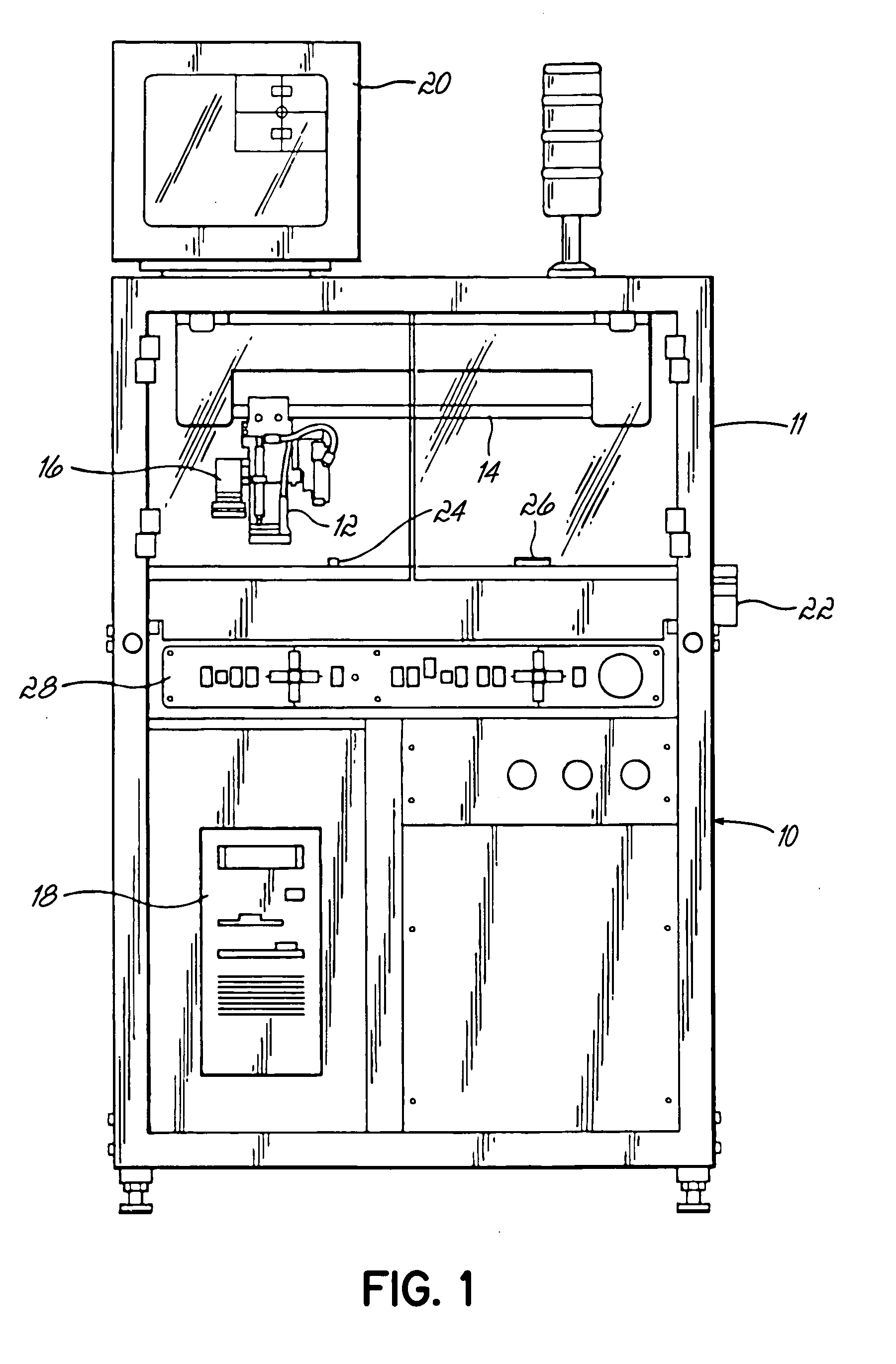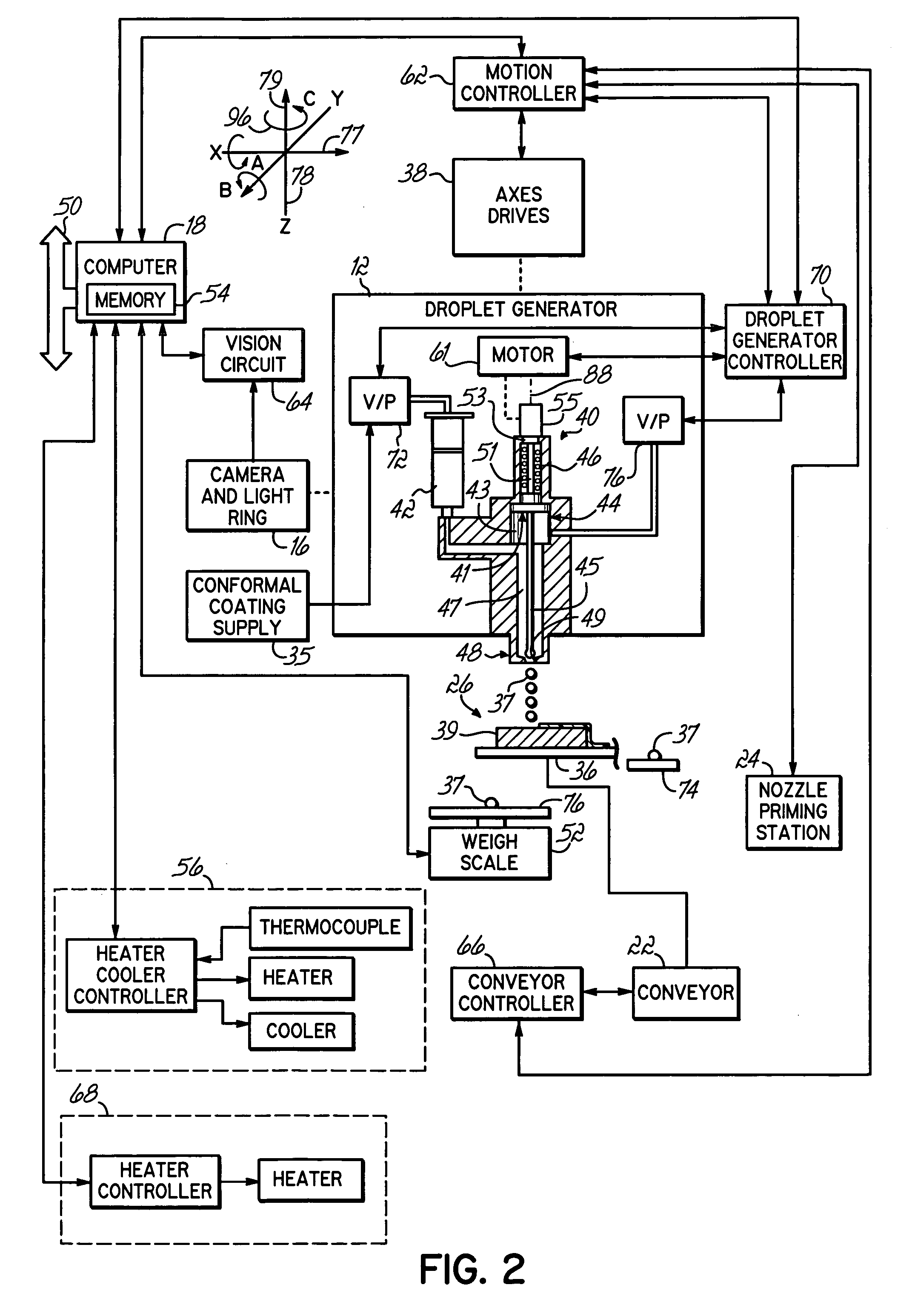Method of conformal coating using noncontact dispensing
a non-contact, conformal coating technology, applied in the direction of superimposed coating process, liquid/solution decomposition chemical coating, surface layering apparatus, etc., can solve the problems of reduced product output, material deposited on a board may spread to locations, and reduce production costs, so as to improve the control of dispensed materials and reduce the effect of material dumping, high discrete and selective conformal coating capabilities
- Summary
- Abstract
- Description
- Claims
- Application Information
AI Technical Summary
Benefits of technology
Problems solved by technology
Method used
Image
Examples
Embodiment Construction
[0016]FIG. 1 is a schematic representation of a computer controlled noncontact viscous material jetting system 10, for example, an “AXIOM” X-1020 series commercially available from Asymtek of Carlsbad, Calif. A droplet generator 12 is mounted on a Z axis drive that is suspended from an X, Y positioner 14 in a known manner. The X, Y position 14 is mounted on a frame 11 and defines first and second nonparallel axes of motion. The X, Y positioner includes a cable drive coupled to a pair of independently controllable stepper motors (not shown) in a known manner. A video camera and LED light ring assembly 16 are connected to the droplet generator 12 for motion along the X, Y and Z axes to inspect dots and locate reference fiducial points. The video camera and light ring assembly 16 may be of the type described in U.S. Pat. No. 5,052,338 entitled “APPARATUS FOR DISPENSING VISCOUS MATERIALS A CONSTANT HEIGHT ABOVE A WORKPIECE SURFACE”, the entire disclosure of which is incorporated be refe...
PUM
| Property | Measurement | Unit |
|---|---|---|
| volume | aaaaa | aaaaa |
| area | aaaaa | aaaaa |
| forward momentum | aaaaa | aaaaa |
Abstract
Description
Claims
Application Information
 Login to View More
Login to View More - R&D
- Intellectual Property
- Life Sciences
- Materials
- Tech Scout
- Unparalleled Data Quality
- Higher Quality Content
- 60% Fewer Hallucinations
Browse by: Latest US Patents, China's latest patents, Technical Efficacy Thesaurus, Application Domain, Technology Topic, Popular Technical Reports.
© 2025 PatSnap. All rights reserved.Legal|Privacy policy|Modern Slavery Act Transparency Statement|Sitemap|About US| Contact US: help@patsnap.com



